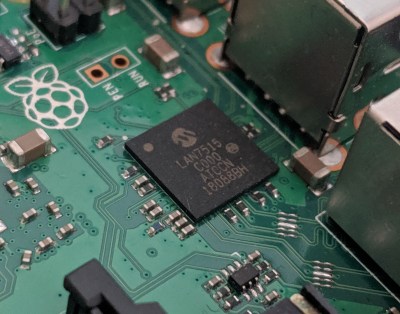The Raspberry Pi 4 was just released. This is the newest version of the Raspberry Pi and offers a better CPU and more memory than the Raspberry Pi 3, dual HDMI outputs, better USB and Ethernet performance, and will remain in production until January, 2026.
There are three varieties of the Raspberry Pi 4 — one with 1GB of RAM, one with 2GB, and one with 4GB of RAM — available for $35, $45, and $55, respectively. There’s a video for this Raspberry Pi launch, and all of the details are on the Raspberry Pi 4 website (link will be updated when available).
A Better CPU, Better Graphics, and More Memory
The CPU on the new and improved Raspberry Pi 4 is a significant upgrade. While the Raspberry Pi 3 featured a Broadcom BCM2837 SoC (4× ARM Cortex-A53 running at 1.2GHz) the new board has a Broadcom BCM2711 SoC (a quad-core Cortex-A72 running at 1.5GHz). The press literature says this provides desktop performance comparable to entry-level x86 systems.
Of note, the new Raspberry Pi 4 features not one but two HDMI ports, albeit in a micro HDMI format. This allows for dual-display support at up to 4k60p. Graphics power includes H.265 4k60 decode, H.264 1080p60 decode, 1080p30 encode, with support for OpenGL ES, 3.0 graphics. As with all Raspberry Pis, there’s a component video port as well tucked inside the audio port. The 2-lane MIPI DSI display port and 2-lane MIPI CSI camera port remain from the Raspberry Pi 3.
The Changes From The Old
For anyone expecting a drop-in replacement to the Raspberry Pi 3, there is one very significant change: the power port is now USB Type-C.
Previously, and especially with the release of the Raspberry Pi 3, there were rumblings from the Raspberry Pi foundation that any old USB power supply simply wouldn’t do. A standard USB power supply is guaranteed to supply 500 milliamps at 5V, or 2.5 Watts. While this was sufficient for the first Raspberry Pi, power budgets have gone up in the past half decade. Now, a Raspberry Pi 3 will draw more than 3 Watts during boot. For any future generation of the Raspberry Pi, this is untenable, and there must be a power socket that supplies more power.
USB-C does this. With a USB-C power input, the Pi is not limited to the 500mA limit of any old power adapter. It’s a great design choice; if you asked why the original Raspberry Pi used a micro USB port for power, you could simply say it’s because every phone used one for charging, thus micro USB power adapters were everywhere. Now, most flagship phones use USB-C chargers that supply more power, and make a great power adapter for any single board computer. Of course, power may also be supplied via the 5V rail on the 40-pin GPIO connector, or through PoE with the relevant PoE hat.
Dual HDMI
For years, the question has been how to add a second, high resolution display to a Raspberry Pi. Yes, you …read more
Source:: Hackaday

